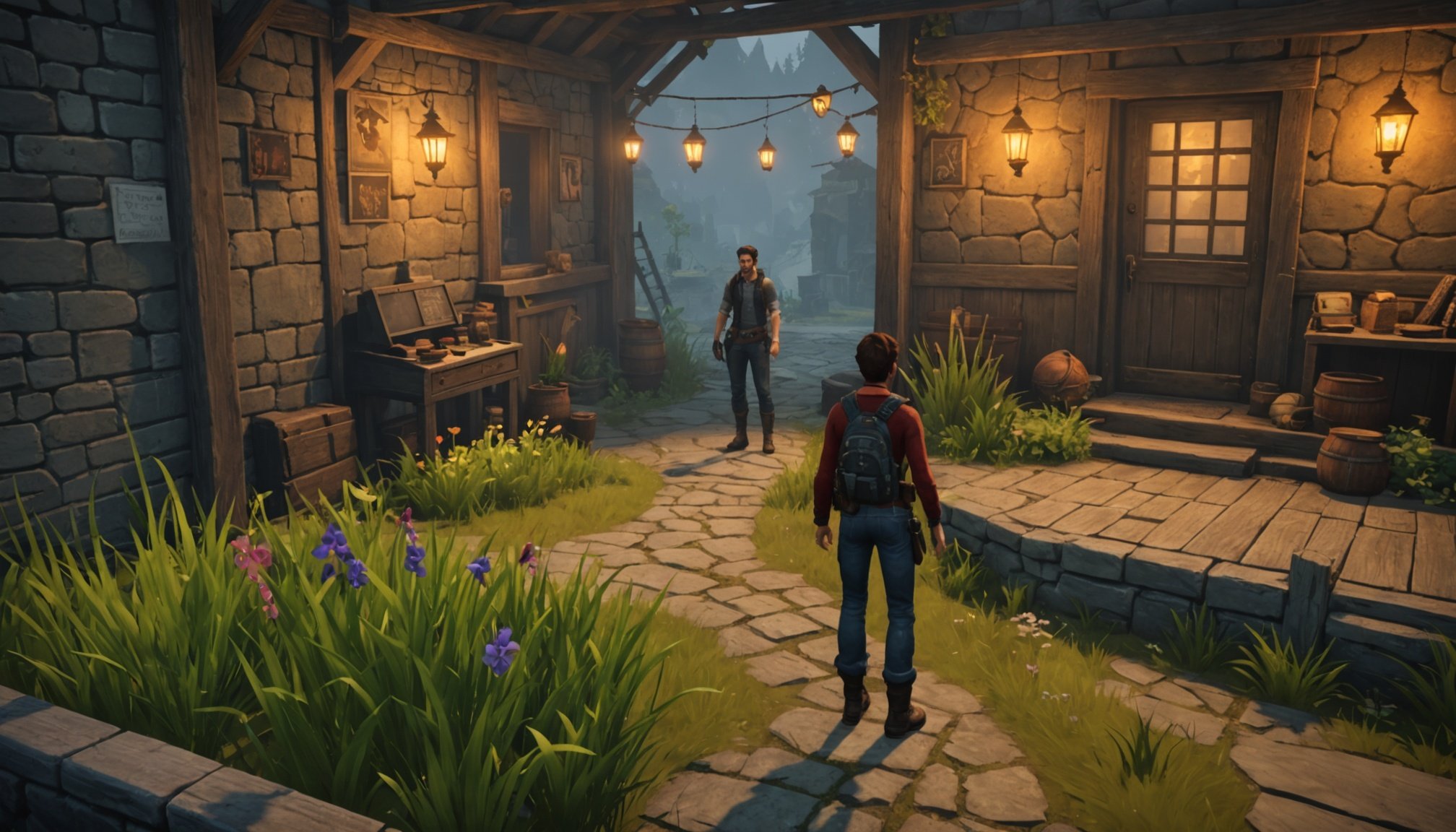Understanding Narrative Design in Video Games
Narrative design in video games is a crucial element that weaves storytelling and player engagement into an interactive experience. It defines how stories are told within the gaming medium, significantly influencing how players perceive and interact with the game’s world.
There are various narrative structures used in games. Linear narratives present a straightforward, predetermined storyline, offering players a consistent experience with tight storytelling control. In contrast, non-linear narratives allow players to influence the story’s path, granting them freedom and encouraging multiple playthroughs. Branching narratives, a common structure, provide several potential outcomes based on player decisions, enhancing replay value and personal investment.
Also to read : Cross-platform game porting: discovering the obstacles and overcoming the challenges
The role of player choices cannot be understated in shaping narrative experiences. Decisions made by players can alter storylines, affect character interactions, and dictate game outcomes. This level of autonomy often increases a player’s emotional engagement as they feel more attached to the consequences of their actions. By crafting narratives that respond to player choices, designers foster a more personalized experience, making storytelling in games not just a backdrop but a central, dynamic component.
Key Principles of Narrative Design
Narrative principles in video games are essential for crafting compelling experiences that captivate players. At the heart of these principles are stories that resonate, game mechanics that complement the narrative, and strategies for fostering emotional engagement.
Also to read : Maximizing your indie game’s reach: creative strategies for expanding your audience
Effective narrative design integrates seamlessly with game mechanics. It’s not just about telling a story; it’s about allowing the player to live it. For example, a well-designed game will use mechanics that mirror the narrative journey, such as exploration reflecting a character’s personal discovery. This intertwining enriches the player’s connection to the game world.
Emotional engagement in storytelling is achieved through immersive techniques. This can involve deep character development, allowing players to relate to their virtual counterparts. When players find emotional connections, whether through suspenseful plots or moral dilemmas, they engage more fully with the experience.
Themes such as redemption, loyalty, or survival can amplify this engagement. These universal concepts invite players to reflect on their values and decisions within the narrative context. By employing such key principles, designers create an emotional dynamic that sustains player interest and reinforces a game’s cultural impact, making players feel truly invested in the storyline.
Successful Examples of Narrative Design
Exploring case studies provides insight into what makes a game’s narrative design successful. Prominent titles, such as “The Witcher 3: Wild Hunt” and “The Last of Us”, excel in crafting immersive storytelling experiences that deeply engage players. These games employ various narrative techniques to captivate their audience.
For instance, non-linear storytelling is a hallmark of “The Witcher 3”, where player choices significantly influence the world and its characters. This technique enhances player engagement by granting agency, fostering a sense of ownership over the narrative’s unfolding. In contrast, “The Last of Us” uses a linear structure but achieves depth through its emotional storytelling and character development.
The impact of storytelling in these games is evident in their high player retention rates and cultural influence. Players often replay these experiences, eager to explore different narrative paths or to relive emotional moments. Such strong narrative design not only boosts engagement but also establishes a lasting bond with the audience. These hallmarks of success demonstrate the power of storytelling to transform gaming from mere entertainment into a profound and memorable experience.
Psychological Impact of Narrative in Gaming
Narrative design profoundly influences player psychology, creating emotional responses through immersive storytelling. Theories such as the transportation theory suggest that players feel as if they are part of the game’s world, allowing them to experience genuine emotions like empathy or sadness. This emotional connection is essential in engaging players deeply and keeping them invested.
Stories in games often mirror real-life dilemmas, enabling players to contemplate moral choices and gain perspective, thereby fostering emotional responses. It is not uncommon for players to cry during poignant scenes or feel triumph as characters reach their goals. These reactions demonstrate the strength of well-crafted narratives in immersing players.
Moreover, the depth of a story has a direct correlation with player immersion. Games with intricate plots and multifaceted characters encourage players to spend more time exploring and experiencing the virtual world. Players are more likely to connect when they find relatable narratives, enhancing their overall engagement. This psychological immersion becomes a key motivator for players to return, seeking further interaction and emotional fulfilment from the gameplay experience. Ultimately, narrative design in gaming serves as a powerful tool, transforming games into emotionally resonant experiences.
Measuring Player Engagement through Narrative Choices
In the realm of video games, understanding player engagement is crucial for adapting and enhancing narrative design. Engagement metrics provide insights into how players connect with story elements. These metrics often include the time spent playing, narrative completion rates, and the frequency of revisiting narrative-driven content. They serve as a quantitative reflection of player interest and satisfaction.
Player feedback offers a qualitative lens on narrative impact. Through surveys, reviews, and in-game analytics, developers can gather insights into which story aspects resonate or fall flat. This feedback helps refine storytelling strategies, ensuring greater alignment with player expectations.
Case studies, such as those from narrative-heavy games like “Life is Strange,” illustrate how player choices add depth to engagement metrics. Players responding positively to complex decision-making systems often encourage developers to further experiment with branching narratives. Trends indicate a growing appreciation for stories that prioritise player agency.
Moreover, patterns highlight a correlation between intricate narratives and sustained player engagement. Games offering rich, choice-driven storylines frequently report higher retention rates. By continually measuring and adapting to player responses, developers can perpetuate immersive storytelling experiences, making narrative choices a pivotal component in the evolution of interactive entertainment.
Comparative Analysis of Narrative Techniques Across Genres
In video games, narrative techniques vary significantly across genres, each offering unique pathways to immersive experiences. Different genres employ distinct storytelling approaches to engage players. Role-playing games (RPGs) often delve into complex character development and expansive world-building, providing story-rich quests and dialogue that draw players into their universe. In contrast, first-person shooters typically emphasize action-driven narratives, incorporating fast-paced storytelling to sustain player adrenaline and excitement.
Genre-specific narrative techniques can deeply influence player experiences. For instance, RPGs may feature branching narratives and player choices that affect world settings and character relationships, fostering a sense of personal ownership over the story. In comparison, shooters might use environmental storytelling, where the game world itself conveys plot elements through visual cues and subtle world details, enhancing realism and immediacy.
Player responses to these techniques are diverse. RPG players often engage more with narratives that offer depth and meaningful choices, while shooter enthusiasts might appreciate streamlined plots that enhance gameplay intensity. Understanding these differences assists developers in crafting stories best suited for their game’s genre, ultimately utilizing effective narrative design to captivate and retain players across distinct narrative landscapes.











